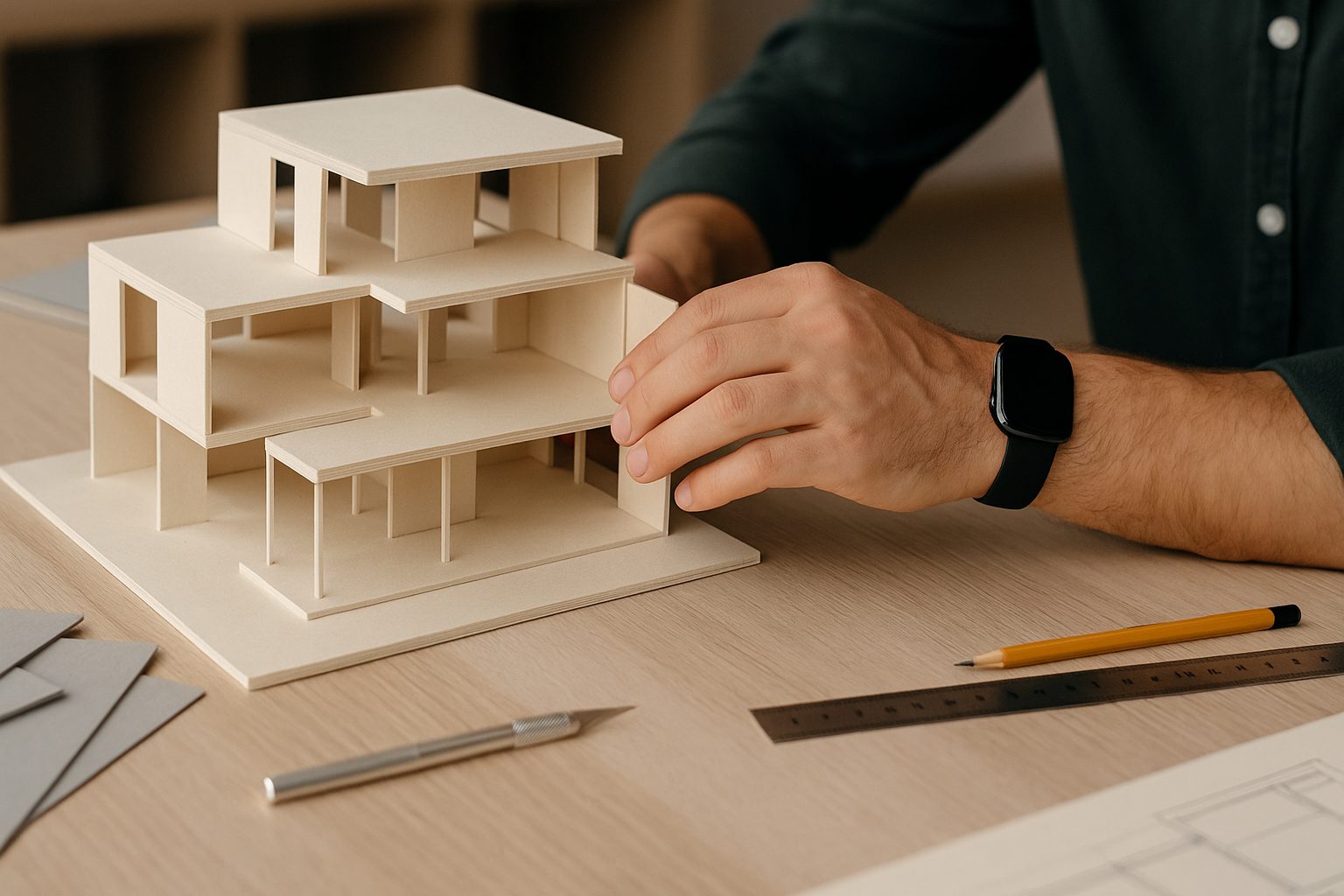In architecture, the ability to visualize a space in three dimensions is everything. While software can take you far, nothing beats the tactile, real-world learning that comes from building your own scale model. For architecture students, DIY models aren’t just coursework—they’re a rite of passage.
Whether you’re exploring form, studying materiality, or preparing for a design critique, model-making sharpens your creativity and spatial awareness. It also gives you a chance to experiment, make mistakes, and evolve your thinking—one cut, fold, or glue drop at a time.
Here are 10 DIY scale models every architecture student should try at least once. These aren’t just exercises—they’re confidence-builders, concept refiners, and portfolio enhancers.
1. The Massing Model
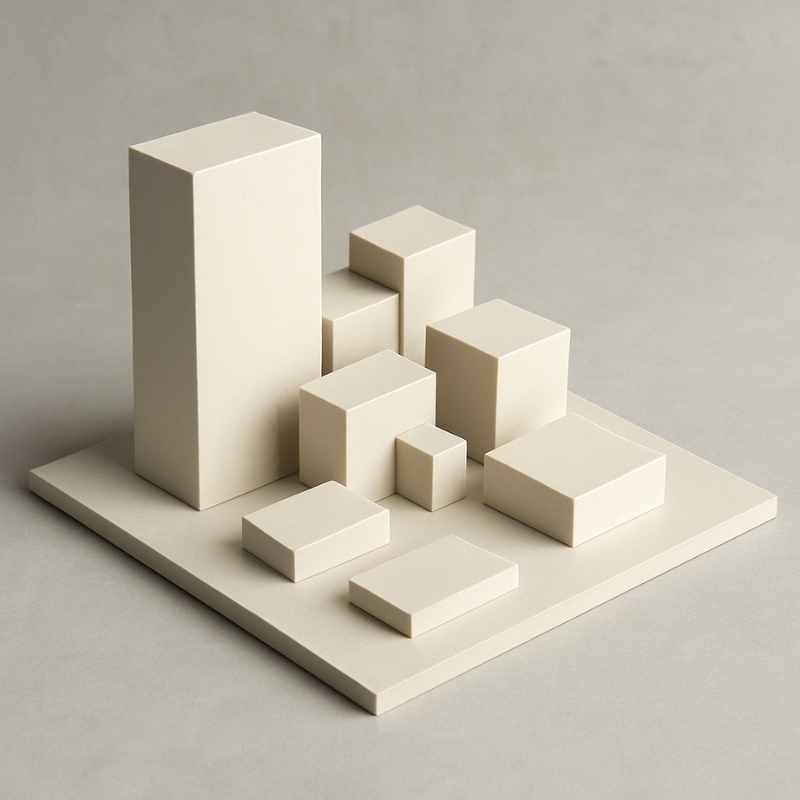
Why it matters:
A massing model helps you explore volume and proportion before diving into details. It’s an essential starting point for conceptual design.
What to use:
Foam core, cardboard, or balsa wood. Go for monochromatic tones to keep focus on form.
What you’ll learn:
How scale, orientation, and site relationship influence your design’s impact.
2. The Site Context Model
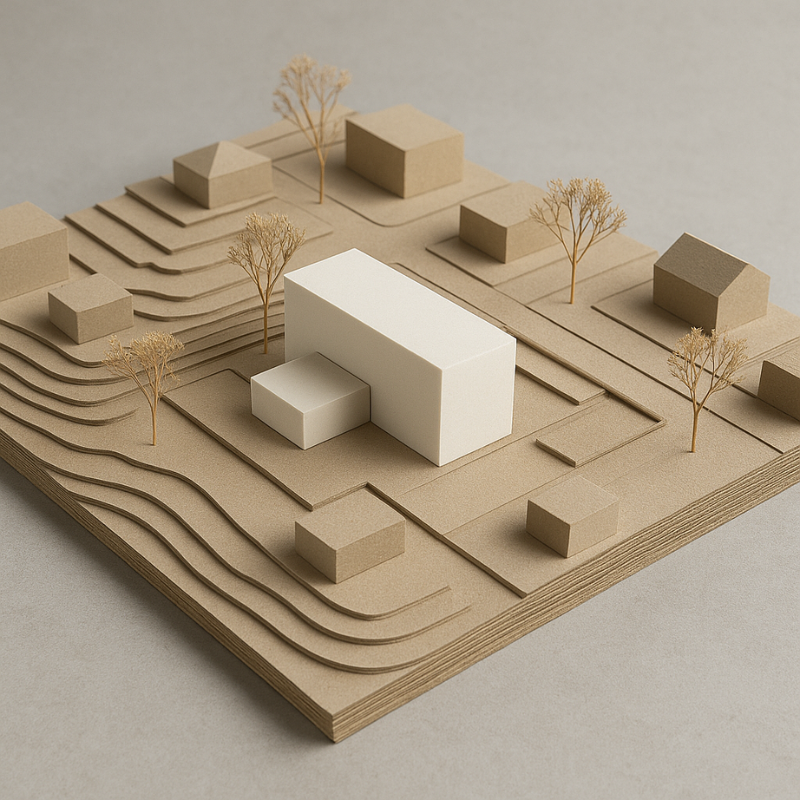
Why it matters:
Architecture never exists in isolation. A site context model shows how your design interacts with its surroundings.
What to use:
Use lightweight materials like corrugated board or 3D-printed elements to represent terrain, vegetation, and adjacent structures.
What you’ll learn:
Zoning, sunlight angles, topography, and context-driven design responses.
3. The Folding Paper Pavilion
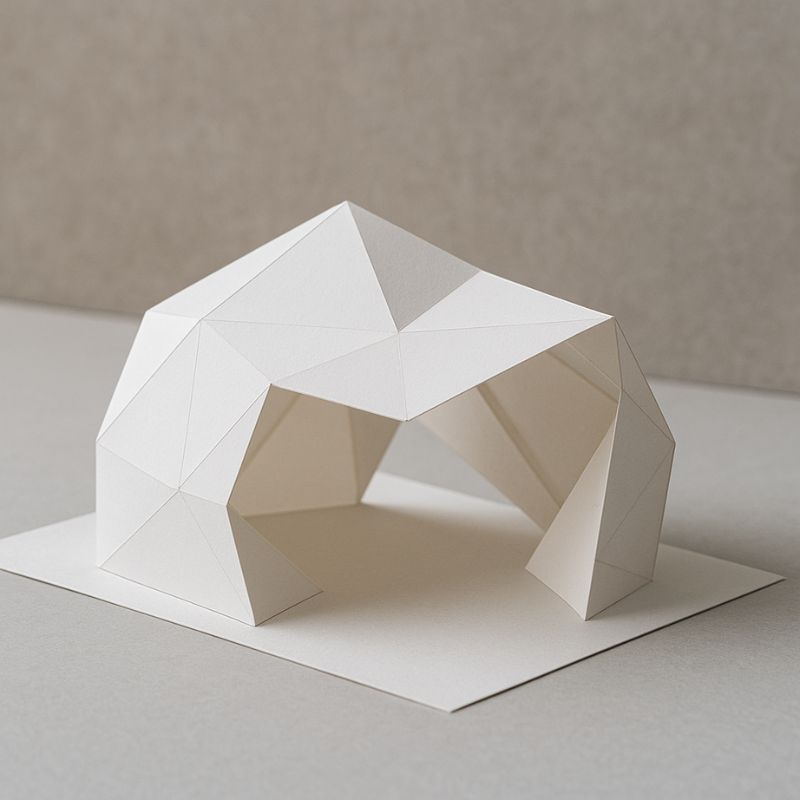
Why it matters:
Minimal materials, maximum imagination. This is where geometry, structure, and elegance collide.
What to use:
Heavyweight paper or cardstock, scissors, and basic adhesives. No cutting corners on accuracy here.
What you’ll learn:
Modular design principles, spatial tension, and how folds can define form.
4. The Structural Frame Model
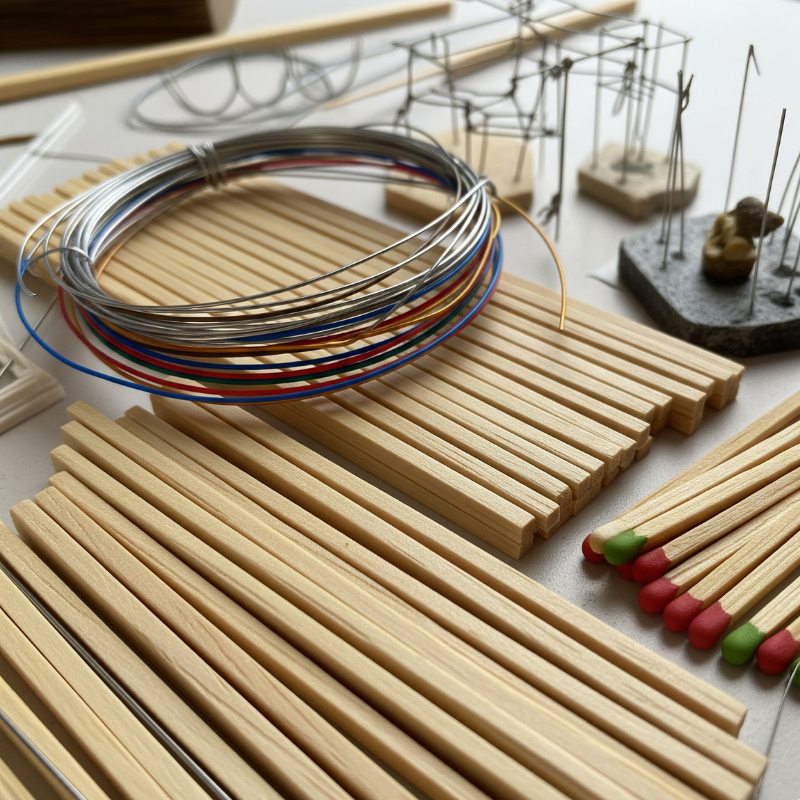
Why it matters:
Understanding load-bearing elements is crucial. This model focuses purely on skeletons—think beams, columns, trusses, and joints.
What to use:
Basswood sticks, wire, or even repurposed matchsticks for small-scale versions.
What you’ll learn:
Load distribution, structural balance, and foundational construction logic.
5. The Parametric Facade Mockup
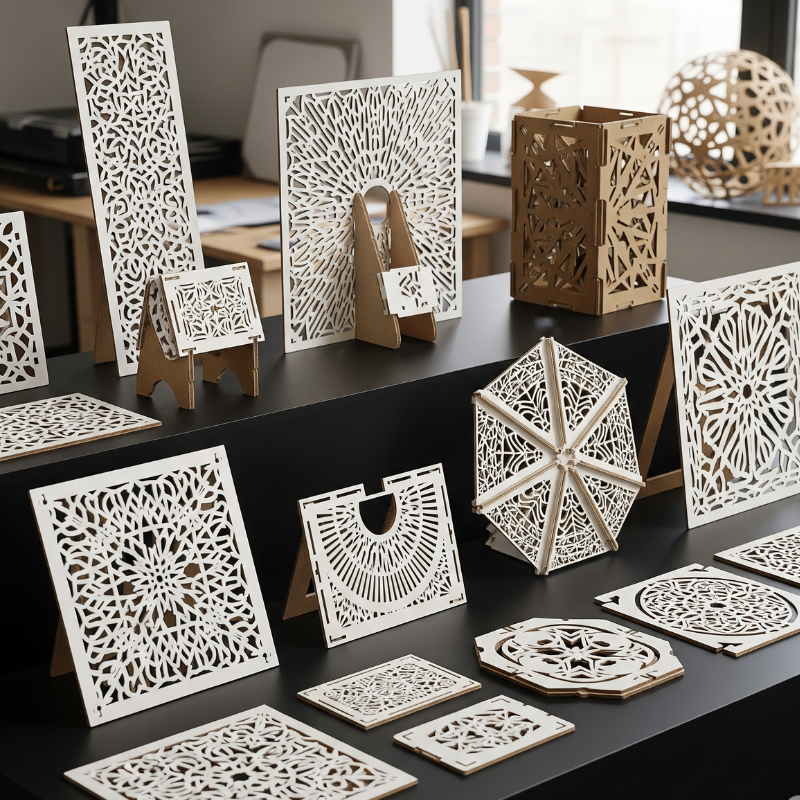
Why it matters:
Parametric design is everywhere in contemporary architecture. A scale model of a dynamic façade system lets you get hands-on with the language of repetition, pattern, and modulation.
What to use:
Laser-cut acrylic or cardboard, and simple connector systems. Rhino or Grasshopper users can export patterns to cut.
What you’ll learn:
Digital fabrication techniques and material behavior in repeatable units.
6. The Modular Housing Block

Why it matters:
Housing is a core challenge in urban design. Build a model that explores prefabrication, scale, and space efficiency.
What to use:
Cardboard, foam board, or 3D-printed cubes. Stack, rotate, and experiment.
What you’ll learn:
Spatial flexibility, housing density, and community-oriented design solutions.
7. The Kinetic Model
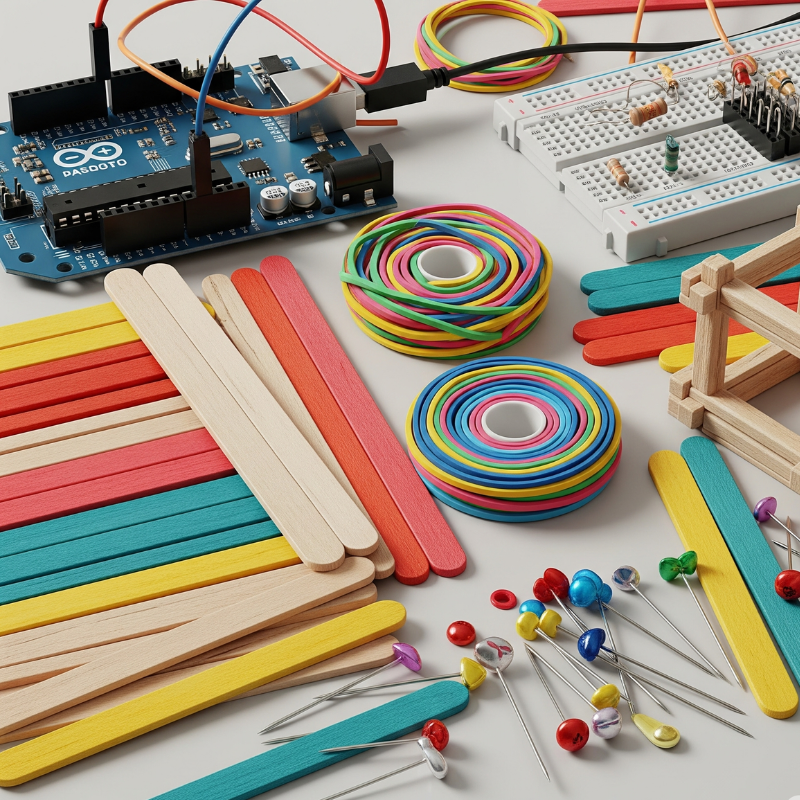
Why it matters:
Architecture can move—literally. A kinetic model lets you explore ideas like responsive design, retractable shading, or adaptive envelopes.
What to use:
Popsicle sticks, pins, elastic bands, or Arduino if you’re into automation.
What you’ll learn:
The mechanics of movement, modular adaptability, and real-world applications of dynamic architecture.
8. The Interior Detail Model
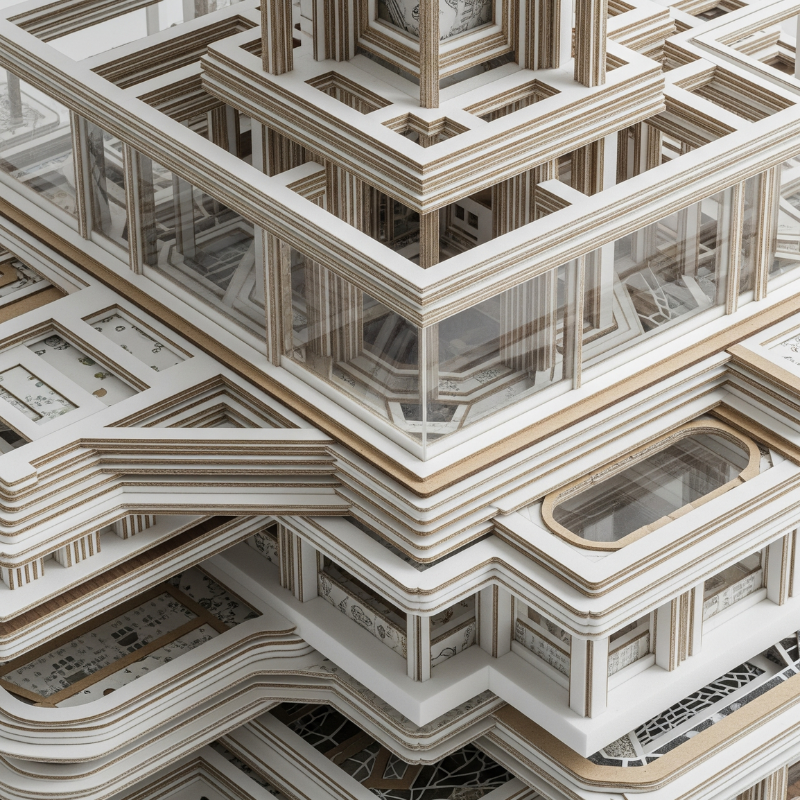
Why it matters:
Not all models need to be macro. Sometimes, zooming in gives you clarity on user interaction, finishes, and atmosphere.
What to use:
Use layers of foam board and acetate for windows and fine detailing with paper or wood veneers.
What you’ll learn:
Lighting conditions, material textures, and the human scale of design.
9. The Topographic Site Model
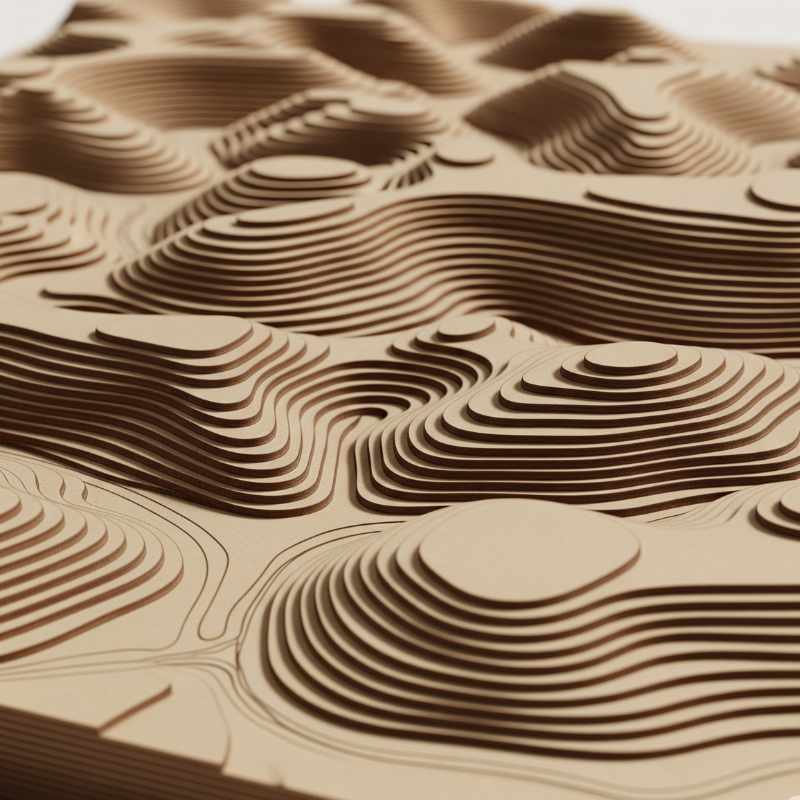
Why it matters:
When your site includes slopes, valleys, or terrain-driven features, a topographic model can make or break your concept’s readability.
What to use:
Layered cardboard, laser-cut MDF, or 3D-printed terrain. Paint or etch site contours for clarity.
What you’ll learn:
Site analysis, building integration, and designing with the land—not against it.
10. The Conceptual Sculpture

Why it matters:
This one isn’t about function—it’s about pure architectural expression. Abstract forms, impossible structures, emotional responses.
What to use:
Whatever you like—wire, acrylic, mesh, resin, or fabric. Let your imagination go wild.
What you’ll learn:
Your voice as a designer. This is where material exploration meets concept art.
Tips for Building Better DIY Models
- Start rough, then refine: Don’t aim for perfection on your first go. Work in layers and stages.
- Scale matters: Be consistent. Common architecture scales include 1:50, 1:100, or 1:200.
- Invest in basic tools: A good cutting mat, steel ruler, sharp blade, and glue gun go a long way.
- Document your work: High-quality photos of your models are gold for portfolios and presentations.
- Always test materials first: Know how they cut, bend, and respond to adhesives.
Why These Models Matter
Each model on this list isn’t just a task—it’s a chance to build foundational knowledge. These exercises develop more than just craft skills—they shape how you think as an architect.
In a world of digital renderings, a physical model can still win the room, convey emotion, and prove design intent. They show dedication, attention to detail, and a grounded understanding of architectural principles.
Final Thoughts
No matter what stage of your architecture journey you’re in, scale models will continue to play a powerful role in your education—and in your career. They’re more than just assignments; they’re stepping stones to better thinking, better communication, and better design.
So grab your materials, clear your desk, and build something that tells your design story.
Looking for more architectural inspiration and hands-on guides?
Keep exploring IdeasForArchitecture.com for tutorials, trends, and tips that fuel your creativity—one idea at a time.





